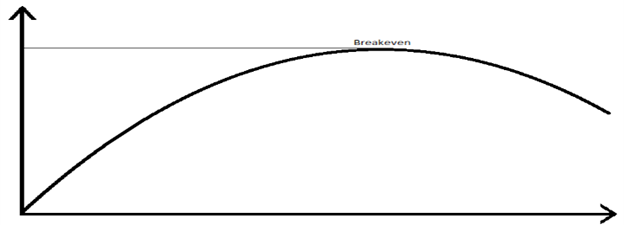All people may be created equal, but the same can’t be said for customers. Everyone knows that some customers are more profitable than others. Conversely, some are downright unprofitable. Knowing which is the all-important question. Despite enormous variations in profitability, many companies continue unprofitable relationships with customers, often providing them with pricing and service levels identical to those received by the most profitable ones. Why? In most cases, companies simply do not know who the unprofitable customers are. As such, they cannot develop strategies or manage costs accordingly.
In the current scenario, numerous organizations are focused on increasing profits to concentrate on increasing the number of products sold or the price of the products or services sold. Others focus on decreasing variable and fixed expenses. However, more companies are finding that doing a deeper analysis into the profitability of products and services by the customer or product line, then using that information to make changes, yields greater profitability. This process is called profit segmentation.
What is Segment Profitability Management?
Segment profitability in simpler terms describes the profit generated from different segments of the business and defines the factors responsible. In other words, segment profitability is the practice of analyzing the profitability of products and services by customer or product line and then making modifications to increase profitability.
It is a useful method to evaluate the attractiveness and success of specific audiences a marketer targets. It can help companies understand how different components of their marketing investments affect profitability, which can guide marketing decisions for the future. Segment profitability is important in the planning and review stages of the marketing planning effort.
Its Importance
The company's management can determine the strengths and weaknesses of each business component by analyzing segment margins. It can handle the difficulties of company segments with lower-than-average profitability or with a considerable reduction in profitability. It is useful for management decision-making since it assists in evaluating previous management decisions and identifying important operational difficulties within different sectors of the firm. Segment Profitability can be understood mainly by profit segmentation by product and profit segmentation by customers.
Profit segmentation based on products or services entails analyzing which items sell the most and comparing them to those with the best margins, along with finding the potential for other less-sold products. If the best-selling items are the most profitable, then creating more products that adhere to those criteria or finding new sales channels will result in greater profit. And if the best-selling item is not the most profitable, then design a marketing plan to uplift the sales and increase profitability.
How segment profitability can help in a granular way to maximize profit
Profit segmentation based on customers segregates different types or groups of customers to analyze the buying pattern and concerns driving the pattern. It points out the most profitable, breakeven, and less profitable but have the potential to be profitable types of customers. If the obstructing factors of breakeven and less profitable customers are identified and dealt with then it can help to boost the profit margin.
To understand Segment Profitability in a fun way let's take an example of a mixed fruits juice, overall, it is a juice with different types of fruits and water mixed in it, here we can find out the amount of fruit and water used, what are the fruits used, what minerals are contained in it, what is the usefulness and amount of minerals contained in it and what is the chemical composition of the minerals.
Other than that, we can also figure out what the effect of the juice will be on the body, how many people like the juice, what fruits were most liked in the juice, is the water to fruit ratio perfect, and how will the chemical composition present in the juice react with the acids present in the stomach and what more can be added to refine the taste of those who did not like the juice. Similarly, segment profitability can help find the cause and effect in a refined and granular way to maximize profit.
Sales and Marketing
Sales and marketing executives may find new market possibilities and identify potential revenue growth by measuring segment profitability. Account segmentation should be planned and modeled at the market, account, or product levels. To focus the sales staff on the greatest, most profitable possibilities, score and rank accounts within segments. Analyze the customers' purchase habits to more precisely define existing sales territory, and marketing strategy and coordinate the resources. Set quota objectives that are simple to explain and justify to the sales team and are based on an accurate and fair allocation of opportunities. Improvise marketing trends and delivery system for fast and easy access to the customers.
Distribution Channels
Organizations can identify different distribution channel offerings and approach for a better, faster, and cost-effective channel.
Studying segment profitability on a granular level can reveal many business opportunities. For example, there are “x”, “y”, and “z” offerings selling through different channels, “a”, “b” and ”c” are the channels. We can find out which channel and offerings are the most profitable and what are the reasons the other channels and offerings are not generating profit. We can also determine which channel is cost-effective and why. It can also show other business opportunities like which location or area has the most demand for which offering.
Cluster Segmentation
Clustering is a statistical strategy for categorizing comparable things into groups. It is a technique for grouping comparable things into clusters so that they may be grouped and segmented. Segmentation, on the other hand, is the practice of categorizing clients based on their commonalities. Clustering and segmenting the data will show the specific segment responsible for the maximum profit.
For example, a company dealing with wearable goods will contain different sectors like Men's, women's, and Kids. In each sector, there will be clothes, shoes, and watches, further sectioning shirts, pants, Sharee, kurta, innerwear, socks, etc. will be present. By segmentation and clustering, the sales and profit from different segments can be derived. The profitability of each product can be derived from the data and can be compared with the other products for detailed analysis. The profit of each SKU can be separately identified and required changes can be made to increase profit.
Benefits of using Segment Profitability
- Analyze account segmentation to better develop sales strategy, ensure alignment with company objectives, and enhance real-time sales performance.
- Segment and score account to gain visibility and insight into where company sales resources should be directed.
- Improve the account assignment ratio to sales representative capacity to provide adequate account service.
- Improve sales region coverage and quota assignment by utilizing intelligent market opportunity and revenue potential.
- Define account categories and scoring criteria using any account attributes, such as revenue, size, location, wallet share, number of workers, or industry vertical.
- Identifying the most valuable products (MVP) and the profit generated by them.
- Detects key reasons for the sale and factors affecting the products which are not performing well.
- Identifying better reasonable and effective distribution channels.
- Structuring better finance models for each and separate commodities for efficient and more profit generation.

The figure depicts the picture of profit of any commodity, the rising curve shows the sales and profit generated in a specific period of time, after reaching its peak it stays at break-even point and after that declination starts. Segment profitability management can help trace the issues in the breakeven point and in the declining phase. It can help identify the factors responsible for the condition and help decision makers improvise and find a suitable solution to increase profit generation.
Conclusion
Hence, organizations that think innovatively about a full range of sources of customer value gradually improve their understanding of these sources, and their ability to assess and measure profitability. Embarking on this process opens new avenues for innovation in products and methods, and generates new options for maximizing long-term customer value. Get in touch with us at Polestar Solutions to explore numerous opportunities. Book a session today!



